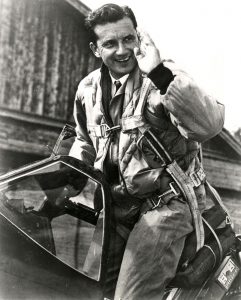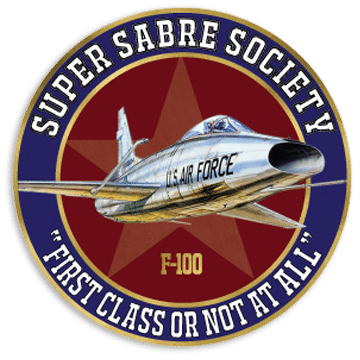 In 1950 Pan American World Airways purchased a P-51 Mustang to allow Blair a chance to attempt a new long-distance record. A P-51C equipped with long-range internal fuel tanks, the aircraft had been flown by Paul Mantz, winning the transcontinental Bendix Trophy air races in 1946 and 1947, and finishing second in 1948 and third in 1949.[3] Rechristening the plane “Stormy Petrel” and then “Excalibur III”, Blair began setting records. On 31 January 1951, Blair flew non stop from New York to London to test the jet stream, traveling 3,478 miles (5,597 km) at an average speed of 446 miles per hour (718 km/h) in seven hours and 48 minutes setting a record for a piston engine plane.[2] On 29 May of the same year he flew from Bardufoss, Norway to Fairbanks, Alaska flying 3260 non stop miles across the North Pole.[4] Captain Blair was awarded the Harmon Trophy from President Truman.[5] That same year he was also awarded the Gold Medal of the Norwegian Aero Club.[citation needed] The Excalibur III is now on display at the Steven F. Udvar-Hazy Center.[6]
In 1950 Pan American World Airways purchased a P-51 Mustang to allow Blair a chance to attempt a new long-distance record. A P-51C equipped with long-range internal fuel tanks, the aircraft had been flown by Paul Mantz, winning the transcontinental Bendix Trophy air races in 1946 and 1947, and finishing second in 1948 and third in 1949.[3] Rechristening the plane “Stormy Petrel” and then “Excalibur III”, Blair began setting records. On 31 January 1951, Blair flew non stop from New York to London to test the jet stream, traveling 3,478 miles (5,597 km) at an average speed of 446 miles per hour (718 km/h) in seven hours and 48 minutes setting a record for a piston engine plane.[2] On 29 May of the same year he flew from Bardufoss, Norway to Fairbanks, Alaska flying 3260 non stop miles across the North Pole.[4] Captain Blair was awarded the Harmon Trophy from President Truman.[5] That same year he was also awarded the Gold Medal of the Norwegian Aero Club.[citation needed] The Excalibur III is now on display at the Steven F. Udvar-Hazy Center.[6]
This Day in History – June 10, 1969 – The X-15 gets a place in history
10 June 1969: The U.S. Air Force donated the first North American Aviation X-15, serial number 56-6670, to the Smithsonian Institution for display at the National Air and Space Museum. The first of three X-15A hypersonic research rocketplanes built by North American for the Air Force and the National Advisory Committee (NACA, the predecessor of NASA), 56-6670 made the first glide flight and
